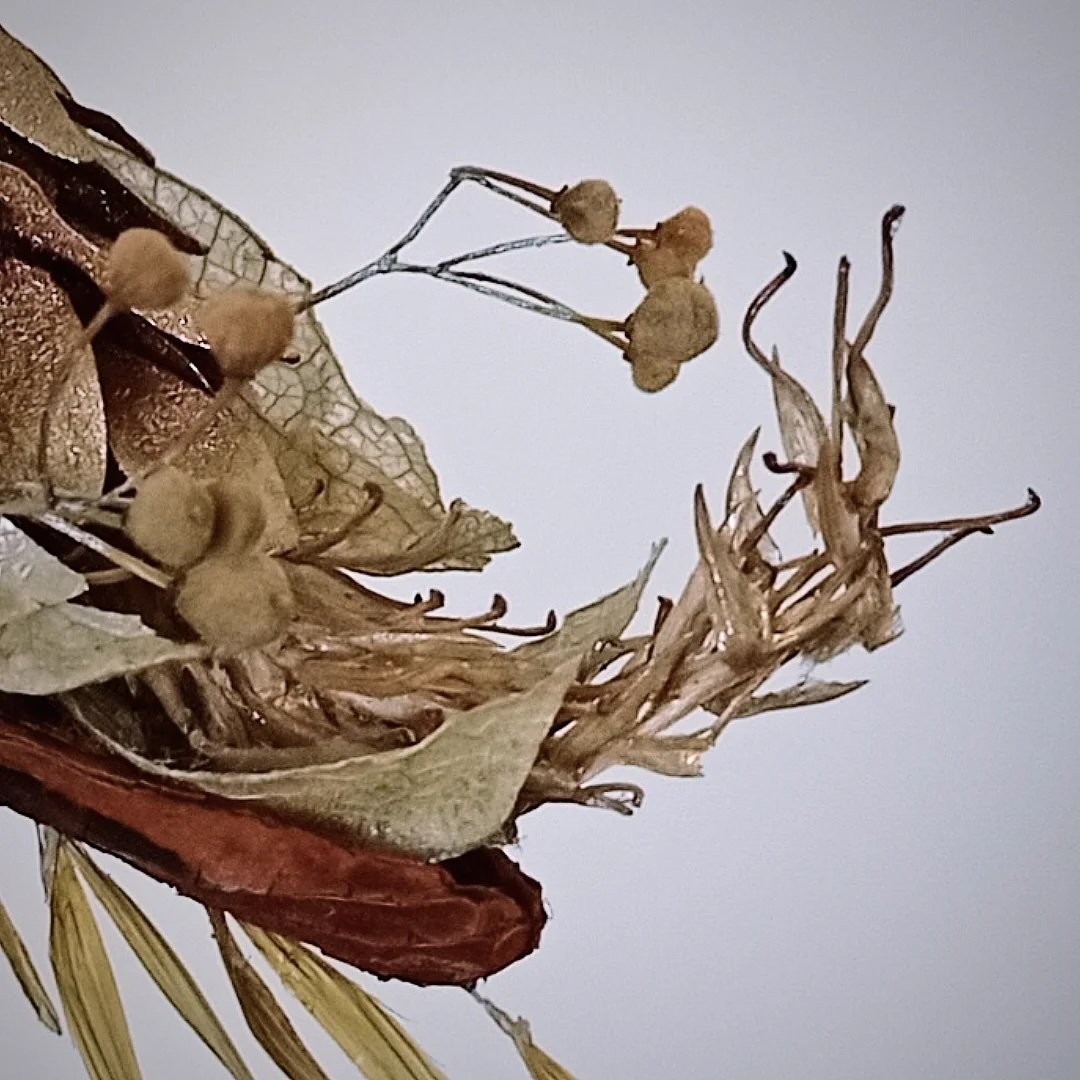Common Name: Fire Ball Beetle
Scientific Name: Dynastes clausus
Specimen Length: 142mm
Specimen Sex: Male
First Described: AD 2072
Description and Habitat: Descendants of Melanophila, a genus of beetle that actively seeks out wildfires in order to mate and lay eggs in freshly burned wood, Dynastes clausus have adapted to permanently exist within the frequently fire-ravaged environments commonly found across the globe. First discovered in Portland, Oregon, it is thought this hardy insect initially evolved further south in California after the Great Infernal Ravages of 2025, having modified sufficiently to not only withstand but thrive in such a destructive environment. Unlike most other insects that inhale air via a tracheal system for the oxygen it contains, Fire Ball Beetles have evolved the ability to breathe the CO2, methane and carbon monoxide given off by fire, as well as digest the thousands of chemical compounds contained in the accompanying smoke. Exclusive to terrestrial habitats, any type of blaze would seem a dangerous threat, however when flames are near, D. clausus simply closes into a tight, fire-retardant ball, hibernating in this state until the fire passes through, or eventually dies down, allowing them to stay in the center of an environment that would otherwise prove fatal. Inferno feathers, the cream-colored infrared macrochaete scattered across their dorsal surface, are sensory organs highly attuned to any fluctuations in the surrounding environment, but especially to heat, smoke, and humidity; they frequently suffer singeing, or burn off entirely, but quickly regrow as conditions become more hospitable. The protective elytra, or grooved forewings, expel fire retardant sap at the onset of danger, also allowing the normally rigid surface an invaluable flexibility, enabling it to curl into a ball, over which the collar frill seals shut. When conditions permit, the collar (its modified thorax) simply unfurls, framing the head once more; embedded with a plane of eyes (covered in gel to protect them from smoke and other irritants), it is further protected by a surround of highly sensitive bristle sensilla.
As it no longer has any real predators, Dynastes clausus commonly grows up to 23cm in length, which means they have a much smaller surface area (compared to body mass) than their ancestors, enabling them to better retain interior moisture. As well as reduced flight-muscle mass (as they no longer need to flee fire), their almost useless wings now only enable short jumping motions when no flames are present, their mucus-covered, ball-shaped tarsi allowing them to land easily, irrespective of the inconsistent temperatures on the ground.
The liquid fras Fire Ball Beetles defecate, along with its sticky fire-retardant elytra sap, helps nourish the tree’s xylem cells that are responsible for moving water and nutrients around the forested ecosystem, as photosynthesis is rarely possible with the huge reduction in leaves modern day trees display. As long as the forest’s subterranean mycorrhizal connectivity is still intact (thread-like fungi that connects trees and other plants within the ecosystem, allowing them to share water and nutrients, as well as basic communication signaling), these hardy insects enjoy a truly symbiotic relationship with their hosts, allowing both to adapt and survive such volatile, and otherwise inhospitable conditions.
Reproduction: Upon finding an area of forest where flames are sufficiently diminished, females lay up to ten eggs in a section of a tree still considered wood, preferably the bark. The first instar larvae spend the winter feeding within this range, then following instars will burrow into plant tissue before pupating in the spring, when they will feed on post-fire fungi. Being highly fecund and with so few predators, Dynastes clausus populations are teeming, so offspring numbers are low, due to competition for resources.
Lifespan: up to five years.






